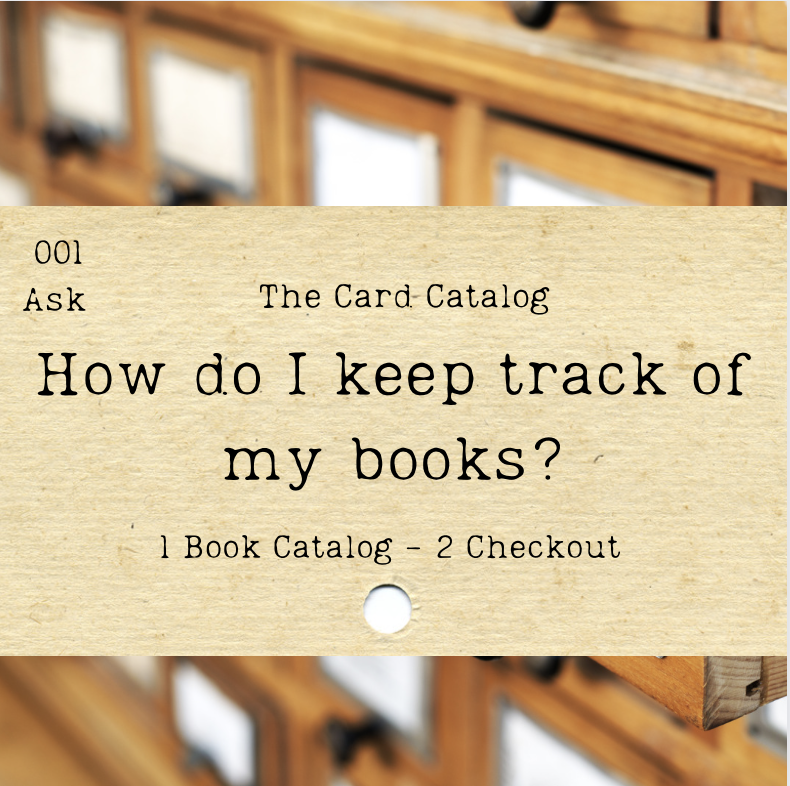
The Notebook Method: There is always good old paper and pen. You can keep a list of your books in a notebook. You can make a list of the books that people borrow and mark them off the list when they are returned. Some people move this pen and paper list eventually to a list on the computer. Others take a photograph of the books that people check out and check them back in using the photograph when they are returned. Still others use old-style check-out cards in pockets, one check-out card for each book.
Make your own database: (Mary Schubert of Pursell Schubert Legacy Library) “As far as keeping track of what I have, I started out using an Excel format, that I outgrew. Now, I have created my own database using Microsoft ACCESS, so that I can keep track of my invoices for my book purchases as well as keep track of what books I have, catalog them according to my own shelving system, and check out. I wanted my own personal way to keep track of all of my books, that wasn’t associated with another online system that either I was paying for or could possibly be inaccessible to me without an internet connection.”
Biblioguides: Biblioguides has a feature that allows you to add your books that are not in the Biblioguides database to your own list at Biblioguides, in addition to marking the books that are already in their database that you own. This list will only be accessible to you, however, with a Biblioguides account, not to your patrons, and it doesn’t come with a checkout system.
Michelle Howard’s Living Books Lady database: Several living books librarians have chosen a yearly subscription to Michelle’s database. Michelle has been doing this job for more than twenty years. She has created a huge database of living books (more than 22,000 and growing). If you subscribe to Michelle’s database, you can add books to your own collection simply by choosing the book that is already in Michelle’s database. And the books in your lending library will be accessible for patrons to see your library holdings and for you to check out and return books. “All this rare ‘living books’ data AND web-functionality is just $89.95/year (intro rate). We can get you started quickly, while it took me well over 24,000 hours to create this database. Let’s save you that time, and get you running . . . without you having to reinvent the wheel!”
Library Thing: Other living books librarians use a LibraryThing account. As far as LibraryThing, their basic accounts are now free, since the TinyCat accounts for lending libraries have a monthly fee. So, you can input your books for free into a LibraryThing account just to keep track of. You can tag as much or as little as you like and most of us have not had issues with their privacy policy (although some have). You can import a list of books into LibraryThing iF the books have ISBN’s, but for older books without ISBN’s you will need to enter the book information one book at a time. You will also eventually need a TinyCat account connected to your LibraryThing account for your patrons to be able to go online and see your catalog and place holds on books. TinyCat costs $3.00 per month for up to 1000 books in your catalog, and the price goes up slightly from there.
Other options for cataloging your collection are Readerware, Libib, and BookPedia. All three of these are designed for personal library collections, but for a small lending library, any one of them may be adequate. There are other cataloging software and checkout systems used by large public and school libraries, but most of these are quite expensive and cost prohibitive for the relatively small lending libraries that we are providing.
This post is part of our Ask The Librarian series, a Card Catalog Project. You can find more like this here. And, we would love to connect with you! If you know more about any of these systems for cataloging your books and checking them in and out, come join us on Facebook here.
2 Comments
Comments are closed.